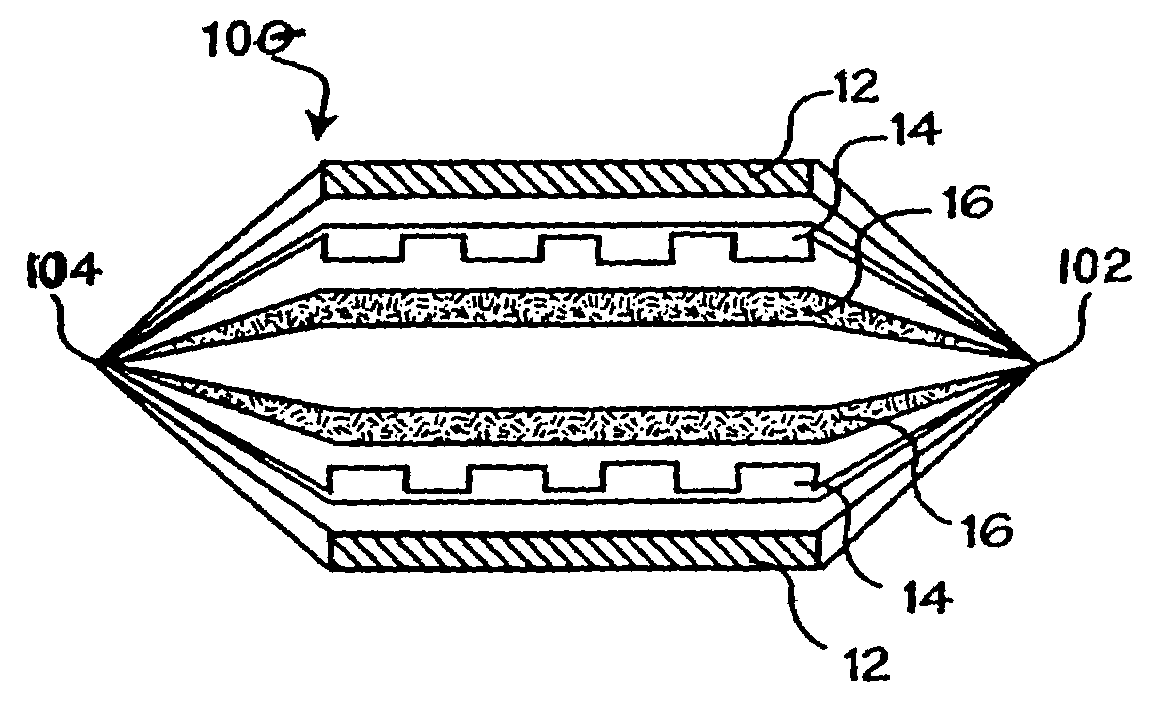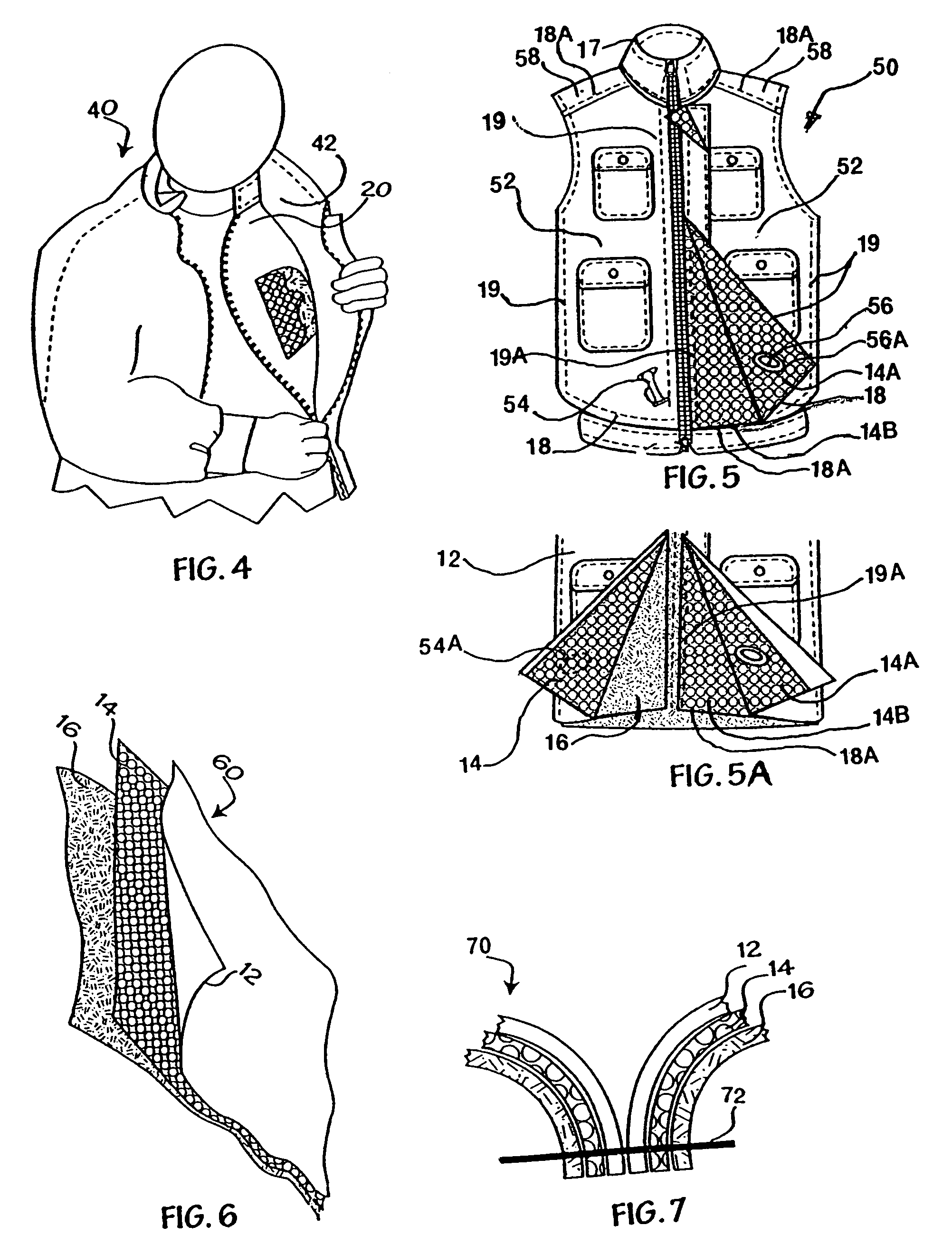Liner and garment ensemble for thermal wear and anti-exposure suits
- Summary
- Abstract
- Description
- Claims
- Application Information
AI Technical Summary
Benefits of technology
Problems solved by technology
Method used
Image
Examples
second embodiment
[0059]10 jacket liner ensemble[0060]12 outer layer[0061]13 sleeve front panel[0062]13A sleeve rear panel[0063]14 sealed air cellular thermal layer[0064]14A multi-layer thermal liner[0065]15 zipper flap[0066]16 inner layer[0067]17 common upper edges[0068]18 common lower edges[0069]18A shoulder panel lower edge[0070]19 common side edges[0071]19A work suit common side seal edges[0072]20 jacket liner ensemble[0073]21 bottom waistband[0074]22 two-way separating zipper[0075]23 pocket zipper[0076]24 front panels[0077]25 pockets[0078]26 cuffs[0079]28 sleeve front panels[0080]30 trouser embodiment[0081]30A rear view trouser embodiment[0082]31 trouser front panels[0083]31A trouser rear panels[0084]32 waistband[0085]32A rear waistband[0086]33 trouser pockets[0087]34 waistband seams[0088]35 trouser zipper[0089]35A unisex zipper opening[0090]36 drawstring[0091]37 trouser zipper flap[0092]38 wraparound leg bands[0093]40 integrated liner ensemble[0094]42 host outer shell[0095]50 vest with inflated...
embodiment 140
[0192]FIG. 15 shows another embodiment of the watertight liner ensemble 150 similar to the embodiment 140 of FIG. 14 using the three layer construction method, outer layer 12, cellular thermal layer 14, and inner layer 16. The front closure 152 is a one-way flexible watertight zipper similar to that described for the fastener 142 of FIG. 14 and is attached to common side edges 19 along the centerline of front panels 154 extending from upper edge 17 of neck seal 144 in a downward direction to the zipper lower edge 18. Zipper 156 is similar to the fastener 35FIG. 3A, and provides for a urinary access opening controlled by zipper tab 158. The zipper tape is attached to the common side edges 19 in the same manner as the front closure fastener 152. The adhesive bonding process for watertight zippers 152 and 158 is as described for front closure 142FIG. 14. An optional unisex urinary access 156 similar to the access 148 in FIG. 14 can also be provided.
[0193]FIG. 16 is a sectional view 160...
PUM
 Login to View More
Login to View More Abstract
Description
Claims
Application Information
 Login to View More
Login to View More - R&D
- Intellectual Property
- Life Sciences
- Materials
- Tech Scout
- Unparalleled Data Quality
- Higher Quality Content
- 60% Fewer Hallucinations
Browse by: Latest US Patents, China's latest patents, Technical Efficacy Thesaurus, Application Domain, Technology Topic, Popular Technical Reports.
© 2025 PatSnap. All rights reserved.Legal|Privacy policy|Modern Slavery Act Transparency Statement|Sitemap|About US| Contact US: help@patsnap.com



